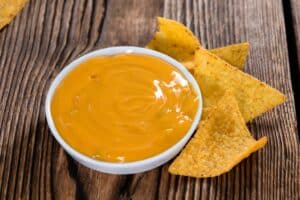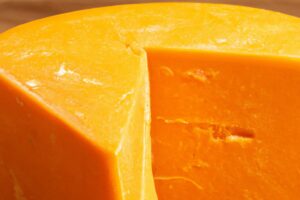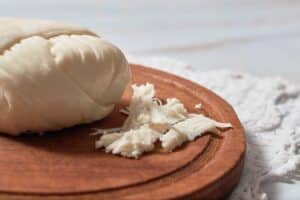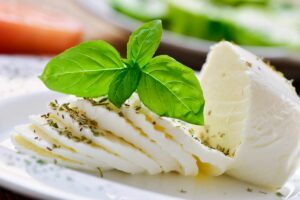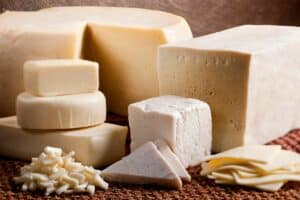When considering asiago substitutions, think about what’s important for your desired use. For example, is cheese the main ingredient or just added for taste? Is the texture essential, or does it need to melt?
A good Asiago cheese substitute will be something with similar characteristics. The five best high-quality substitutes for Asiago cheese are Grana Padano, Gruyere, Parmesan, Manchego, and Romano Pecorino. You can find these cheeses in the specialty cheese section of your grocery store.
What is Asiago Cheese?
Asiago is a medium to hard cheese made from cow’s milk. Like Champagne, Asiago cheese must be from a particular region. Asiago cheese is produced and manufactured in the Asiago Plateau, an alpine area in Italy’s Trentino and Veneto areas.
When cheese is authentic to a specific region, it is protected by the stamp DOP, which stands for “Protected Designation of Origin.” The DOP sets guidelines to standardize a cheese so that it is unable to be imitated and protects the characteristics of the region, i.e., type of native grass or cow, giving the cheese a unique flavor.
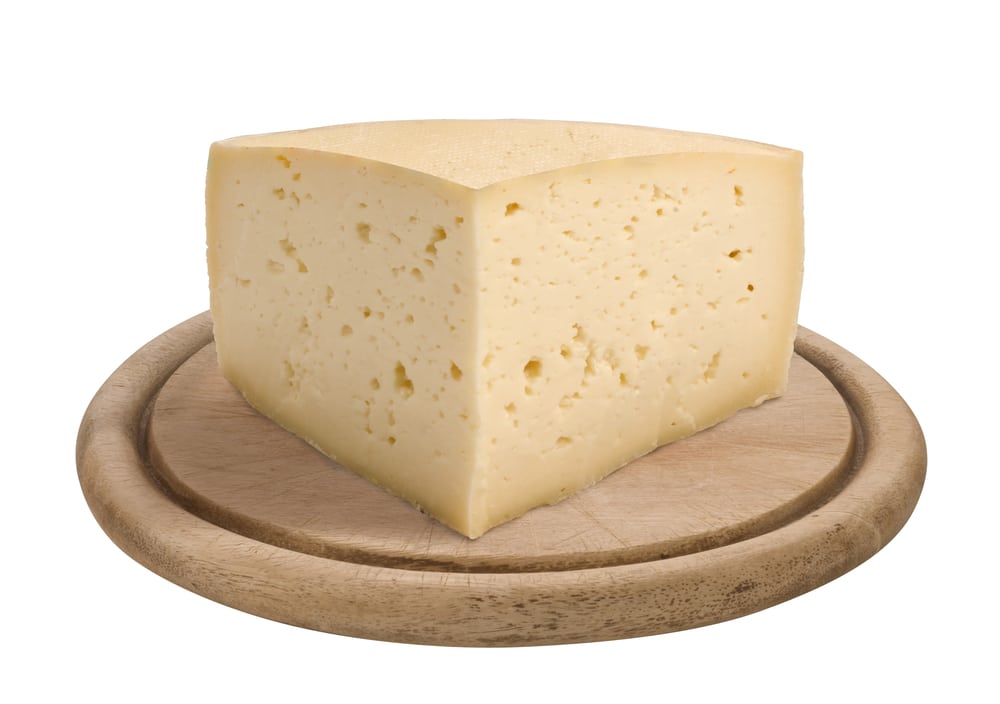
Whether Asiago cheese is fresh or aged determines the texture and flavor. Asiago Pressato refers to the youngest form of cheese, made from whole milk only. It has a mild buttery aroma and a light, delicate flavor.
It looks similar to a soft cheese, like brie, but is not as creamy and contains sporadic holes. Because of the texture, you can melt fresh Asiago, making it a suitable choice for use on grilled sandwiches, pizza, or to combine into a pasta sauce.
Asiago d’Allevo, aged Asiago, is made from semi-skim milk. Over time, as the cheese ages, it becomes firmer and more crumbly. Asiago Stravecchio, aged longest, will have the most robust flavor, described as nutty, spicy, yeast-like, and slightly bitter.
The salt content is high and increases with age. It can hold an aroma similar to dried fruit. Aged Asiago cheese is often grated on salads or pasta dishes to add flavor as it does not melt.
5 Recommended Asiago Cheese Substitute
The 5 most common cheese like asiago cheese:
- Grana Padano
- Parmigiano Reggiano
- Manchego Cheese
- Gruyere
- Pecorino Romano
Grana Padano
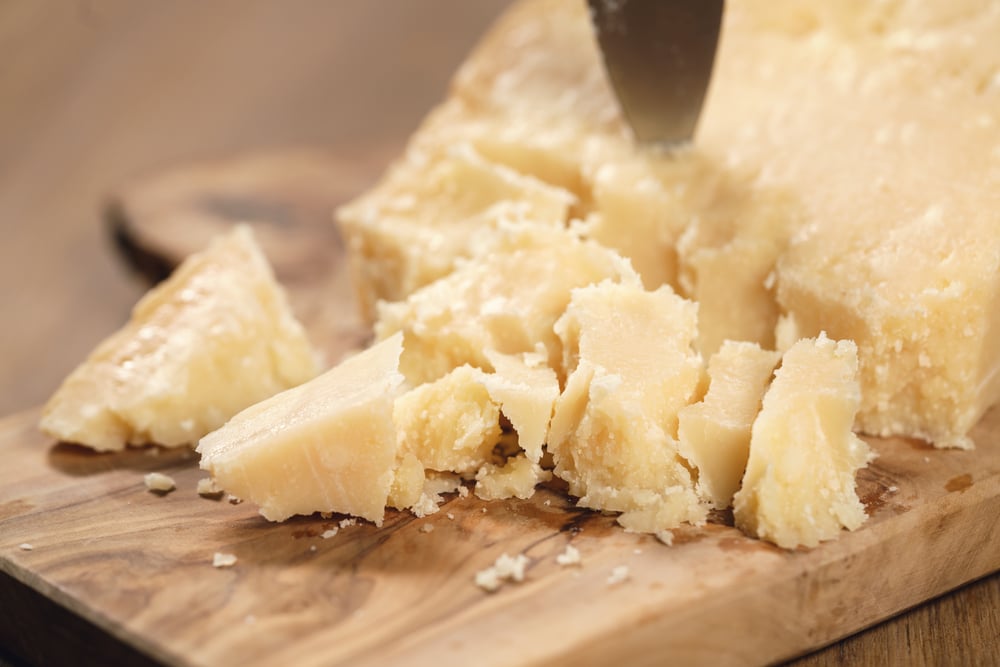
Grana Padano is an aged cheese similar to asiago. It is a hard cheese aged a minimum of nine months. The longer the cheese is aged, the more firm and crumbly it becomes. The cheesemaking process of Grana Padano uses unpasteurized, semi-skimmed cow’s milk.
This cheese is from the Po River Valley of Italy and received DOP status in 1996. It is produced only in Lombardy, Piedmont, Trentino/Alto Adige, Veneto, and Emilia Romagna. Grana means grainy and refers to the coarse texture the cheese takes on through the aging process. Like Asiago, it has a nutty taste but is milder, slightly sweeter, creamier, and more buttery.
Grana Padano is inexpensive, so if you’re thinking of your bank account and need an aged cheese with a similar flavor, this is the best Asiago substitute for you.
It is excellent to crumble or grate over salads. Try using it instead of Asiago over an Arugula and Endive Salad. The buttery, sweet flavor will complement the spiciness of the greens.
Sauce recipes that call for more than one cheese or a lot of cheese are good ones to substitute Grana Padano. For example, Fettuccine Alfredo pasta sauce can be made with Grana Padano instead of Asiago because the dish is already rich in flavor.
Parmigiano Reggiano
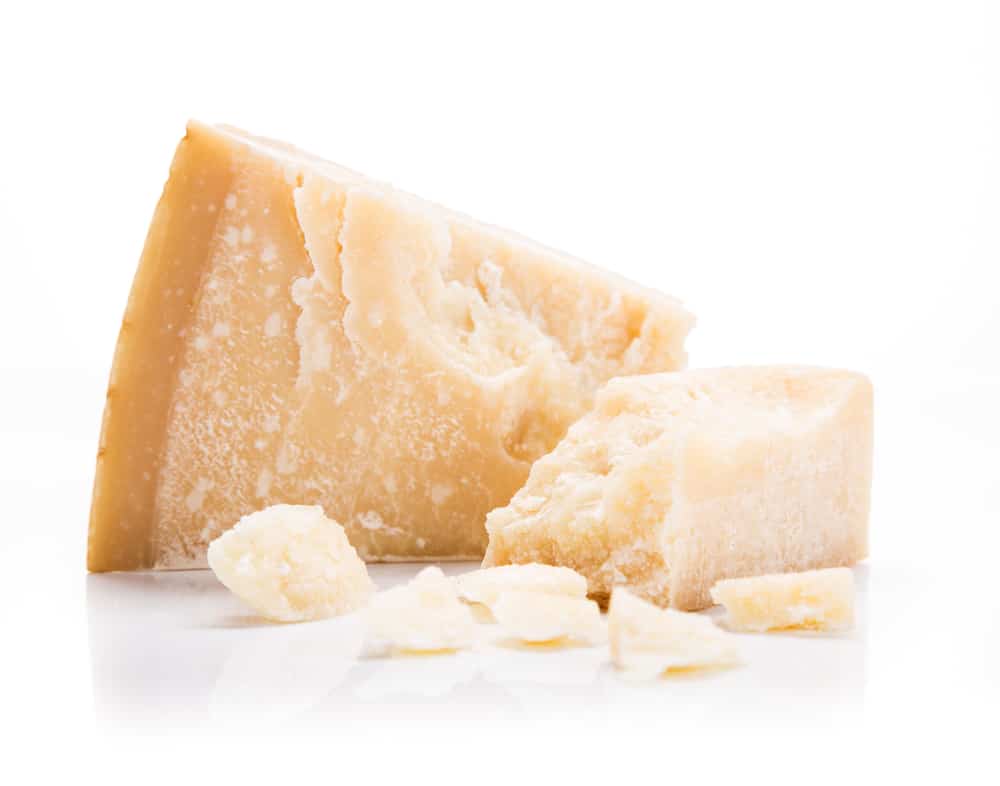
Parmigiano Reggiano, like aged asiago, is made from semi-skim cow’s milk. It is genuine to the Italian provinces of Parma, Reggio Emilia, Modena, and parts of the Mantua and Bologna provinces.
Cheese labeled just “parmesan,” like here in the United States, may be made in a similar style but are not authentic to the area of Italy. These types of cheese do not carry the DOP stamp and are not regulated.
The youngest Parmigiano Reggiano is still aged for a minimum of twelve months. This cheese is softer than Asiago Vecchio, even though it is older. The younger Parmigiano Reggiano has more herbal and floral notes. An older Parmigiano Reggiano is more similar to that of the Asiago Vecchio with nuttier flavors and a more crumbly, grainy texture.
This cheese stands apart from Asiago because it is lactose-free and all-natural. The milk used to make this cheese is monitored closely for quality. The end product is free of additives and preservatives. For those with lactose intolerance, this is an excellent Asiago cheese substitute. Try using it in this Artisan Asiago Cheese Bread recipe or grate freshly over salads.
Parmigiano Reggiano has a slightly lower salt content than Asiago. Try substituting Parmigiano Reggiano for Asiago if you are watching your sodium intake.
Manchego
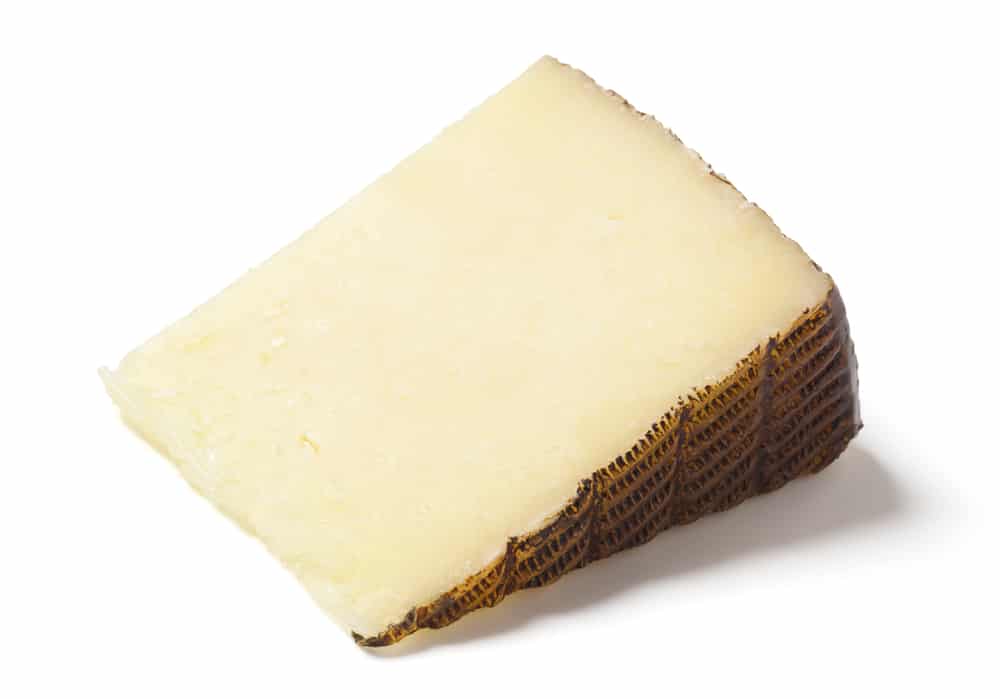
Right off the bat, this cheese is a little bit different from Asiago because it is made with sheep’s milk and is a product of Spain rather than Italy.
It is authentic to La Mancha, Spain, where specific regulations from the Spanish DOP are in effect. The milk used to make Manchego comes from manchega sheep native to the area. The Oxford Companion of Cheese names it the most popular cheese in Spain.
Despite these differences, Manchego Cheese has softer styles labeled fresco or curado and harder styles, semi-curado, and viejo. Manchego is a good Asiago cheese substitute for either the Asiago Pressato or Asiago d’Allevo.
Young Manchego has a more mild flavor. The fresco style is aged for only two weeks and tastes like fresh milk. Because it is so fresh, it is hard to find in the United States.
Curado and semi-curado are more available. Manchego viejo is aged the longest and takes on flavors most similar to aged Asiago. Manchego is well-rounded and exudes tart, buttery, nutty and sweet flavors.
Try substituting young Manchego in this sourdough dressing at Thanksgiving. The melted Manchego may even become your new favorite! Use aged Manchego in this Quinoa Salad with Marinated Asiago. Marinated Manchego is a popular tapa in Spain. Or, try aged Manchego in this Keto recipe for Asiago Cheese Crisps.
Cheese made with sheep’s milk contains twice as much butterfat and exudes a richer flavor than cow’s milk. In addition, this cheese tends to be less salty because it is not aged as long. It also holds enough flavor that a little goes a long way. Because of these attributes, Manchego may be less expensive to boot.
Gruyere
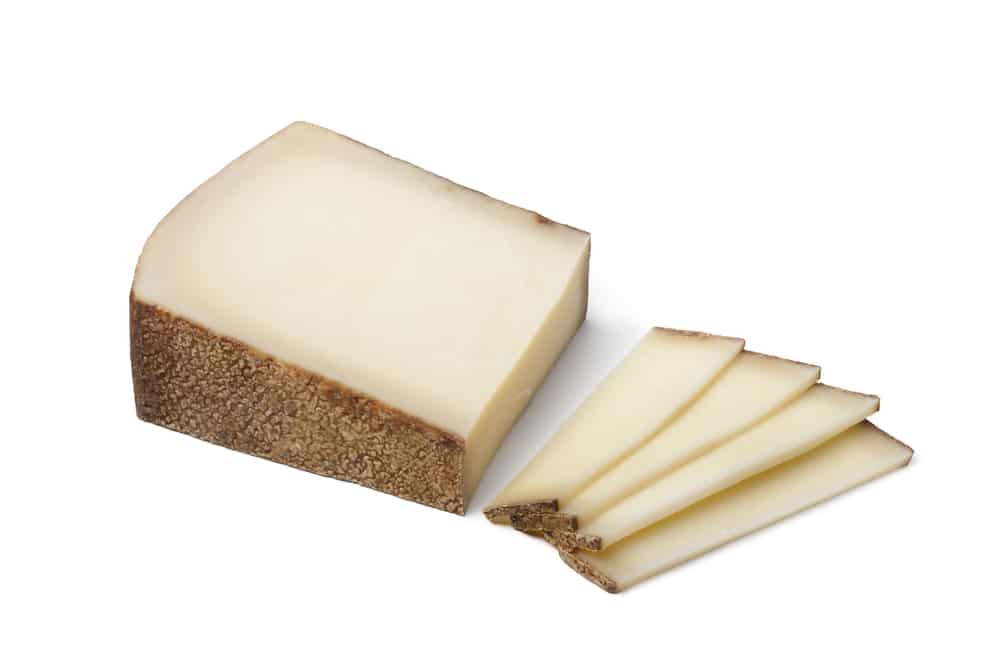
Gruyere is specific to Gruyere, Switzerland, and is one of many Swiss-style kinds of cheese. Similar to the DOP, Gruyere is protected by the AOC, or the Appellation d’origine controlee.
Strict regulations are in place for this area, including things like animal diet and the actual weight of the finished cheese wheels. These regulations also help to protect the landscape.
The milk used to make the cheese must come from within twelve miles of production. The cows roam in an alpine area and feed on specific grass dense with nutrition. These cows, in turn, produce nutrient-rich milk and distinctly flavored cheese.
The cheese is made with whole-fat cow’s milk. Also, an alpine-style cheese, it has a nutty, salty flavor similar to Asiago. Gruyere can be young and fresh or older and more intense. The fresher version is softer and very popular for cheese dips and fondue.
Because It has a higher water content than many cheese varieties, it makes a wonderful cheese for melting. Try this decadent Asiago Dip recipe with Gruyere instead of Asiago. Other great recipes to use Gruyere as an alternative are macaroni and cheese or other creamy pasta dishes.
Aged Gruyere, pressed at first to remove moisture, is cured between three to ten months. As time goes on, it takes on a grainier texture, like Asiago, making it an ideal substitute for grating over salads or incorporating into a pasta dish like Asiago Chicken and Pasta.
This would be recommended over parmesan as a substitute because it melts better.
Pecorino Romano
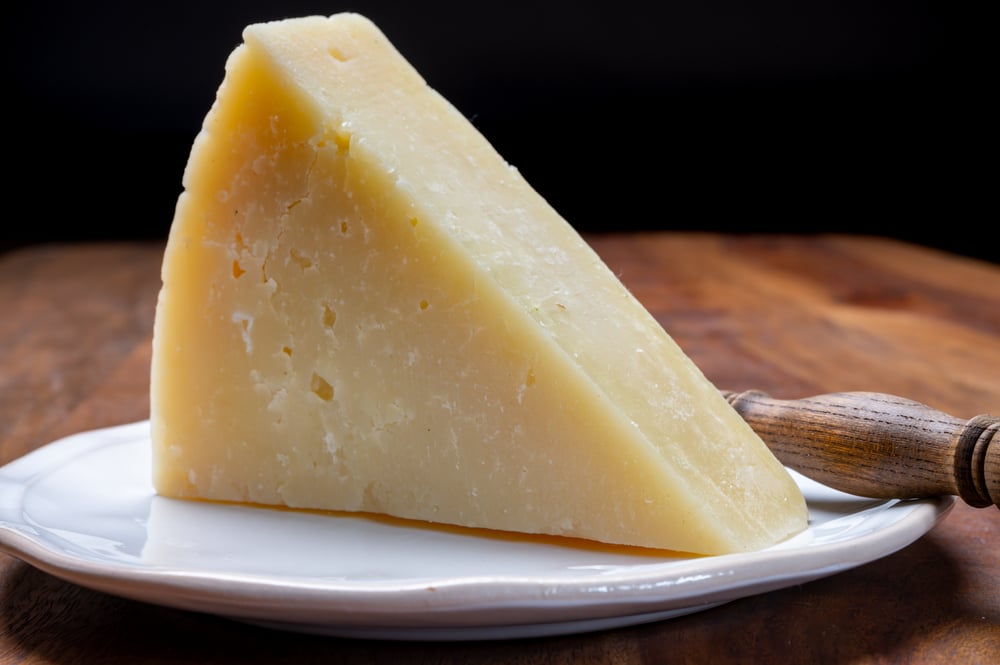
Pecorino Romano may look and feel similar to Asiago, but like Manchego, it comes from sheep’s milk. It got its name because it originally hails from the Roman countryside. It is now specific to Sardinia, Italy, and is another region certified cheese, or DOP. Romano without the Pecorino can be made from either cow, sheep, or goat’s milk.
However, in the United States, the cheese is made mainly from cow’s milk and is referred to as just Romano.
Pecorino Romano is also a hard, crumbly cheese with a salty flavor. The flavor is sharp and may be too intense to eat on its own. However, it is perfect for a cheese board paired with fruit, crackers, or jam.
Because of the strong flavor, a little goes a long way, and it is typically seen grated or shaved on salads, pasta dishes, and vegetables. It is a great cheese to blend with others, like mozzarella, to give a dish a stronger flavor. Using it instead of Asiago on a pizza would be amazing.
One outstanding attribute of Pecorino Romano is its shelf life. It is an excellent Asiago cheese substitute because you may just always have it on hand. It can last in the fridge for up to six weeks and can be frozen for six months.
Unlike Gruyere, it has an extremely low water content which allows it to be frozen and thaw without losing much of its integrity.

